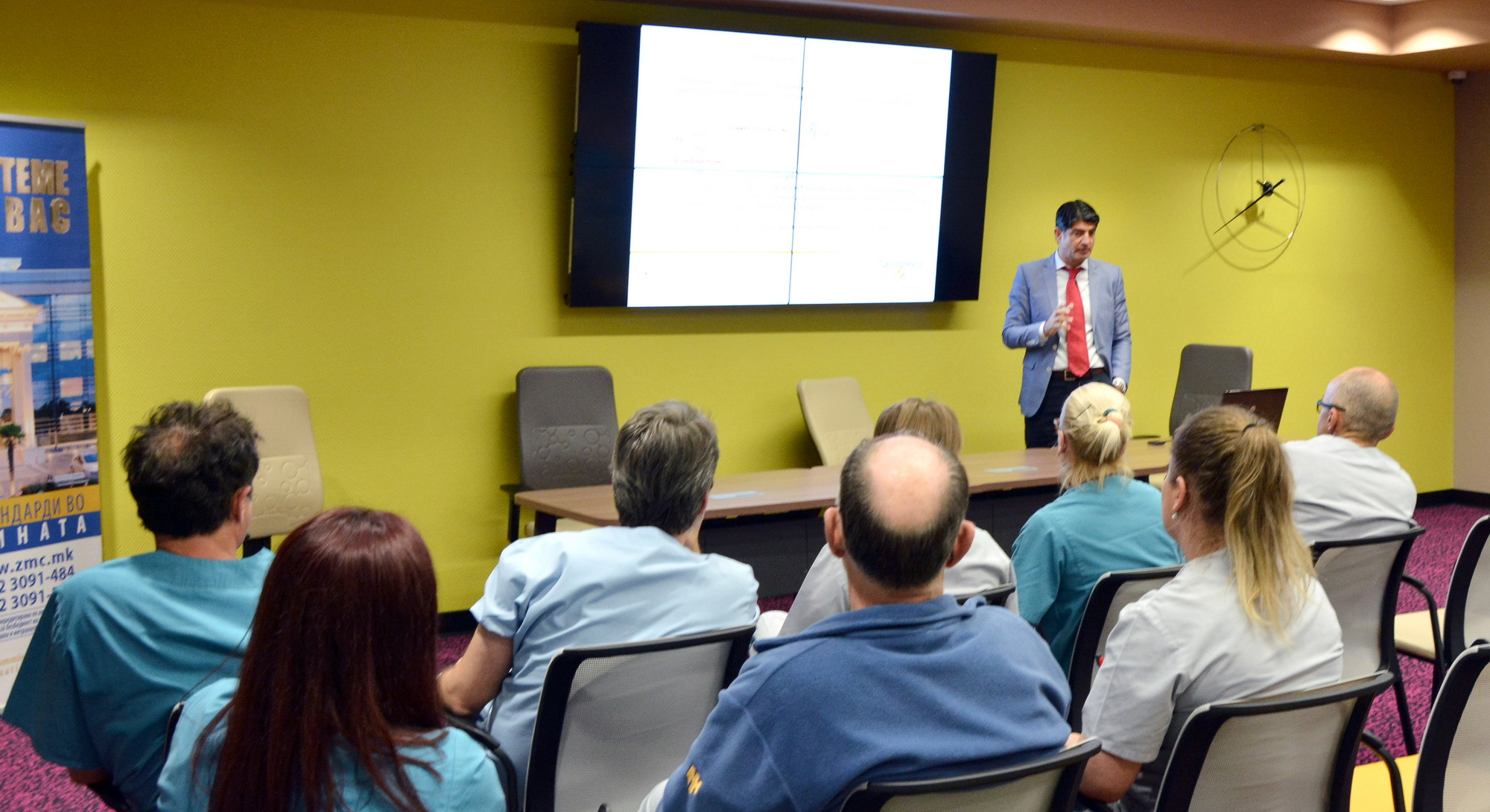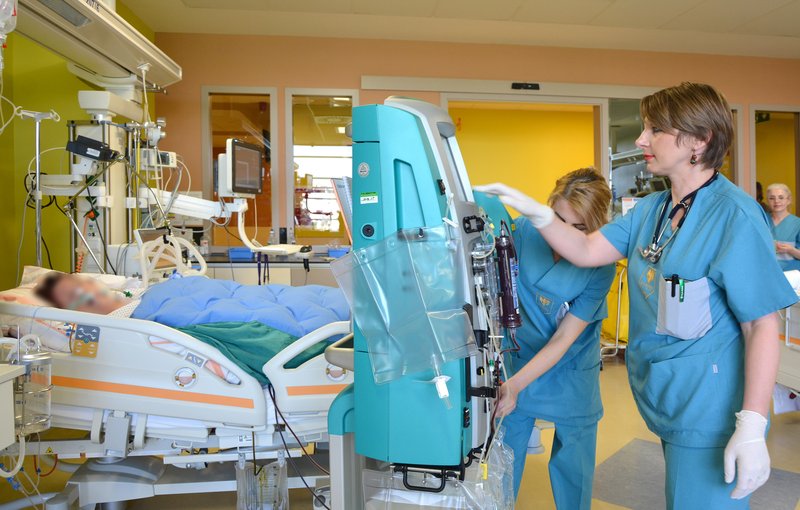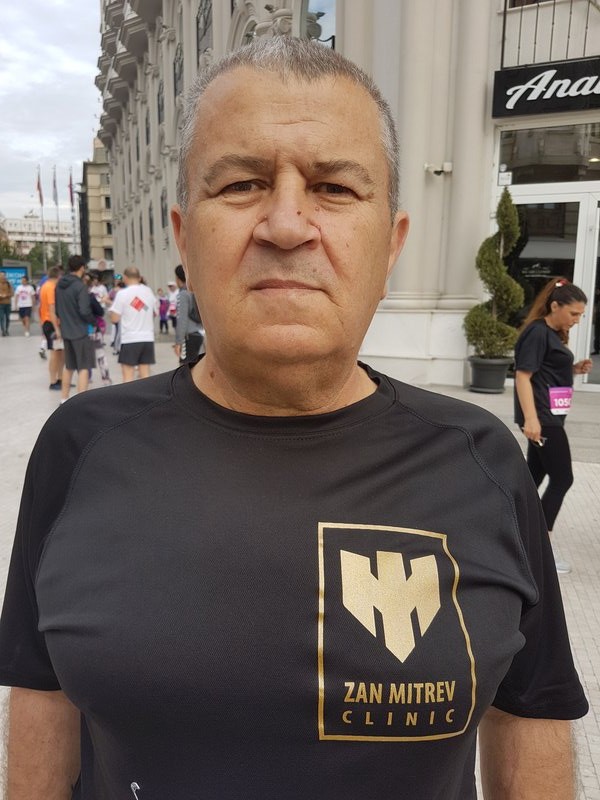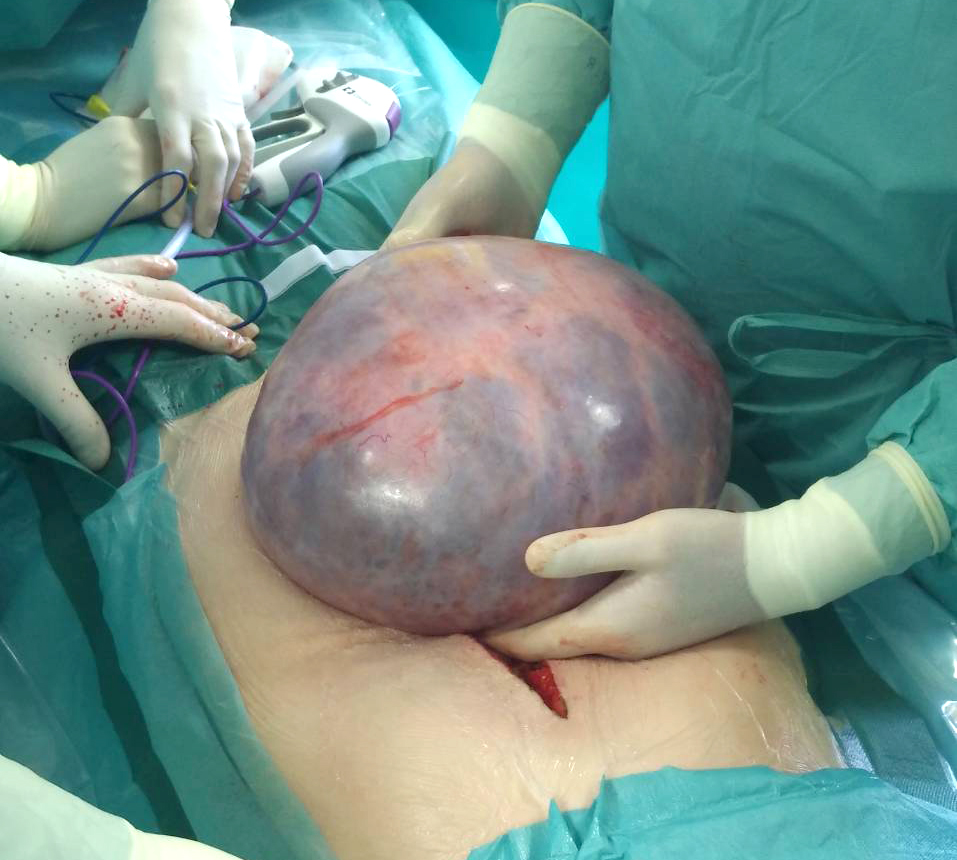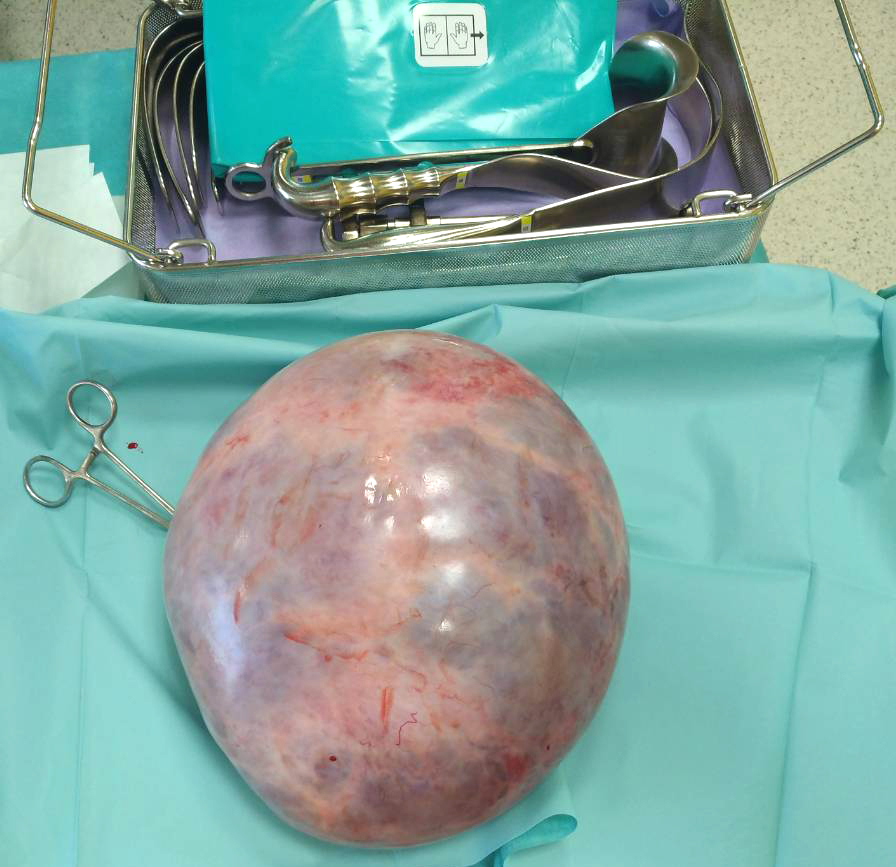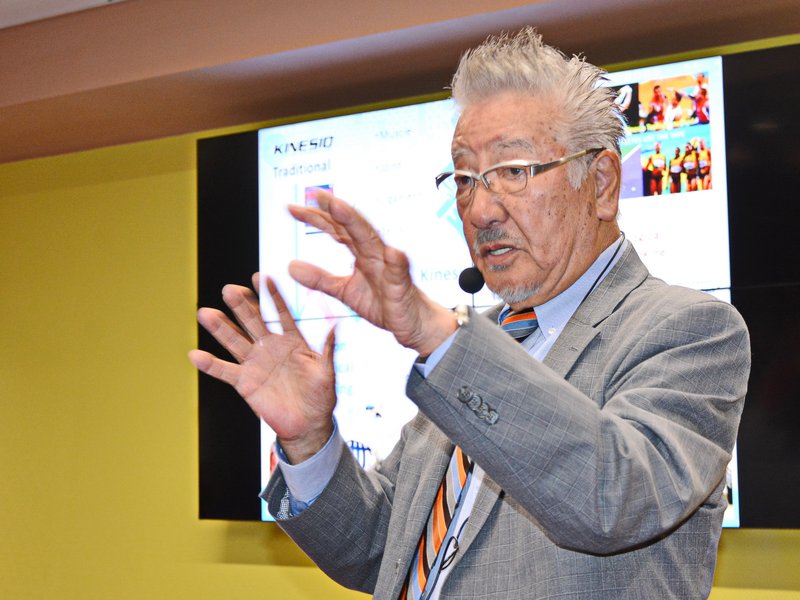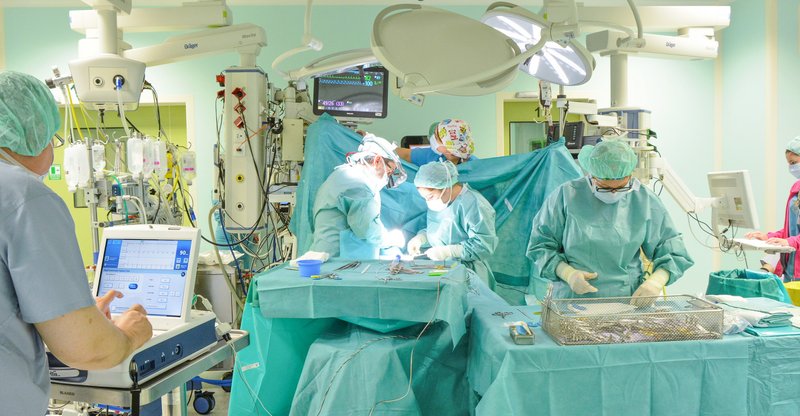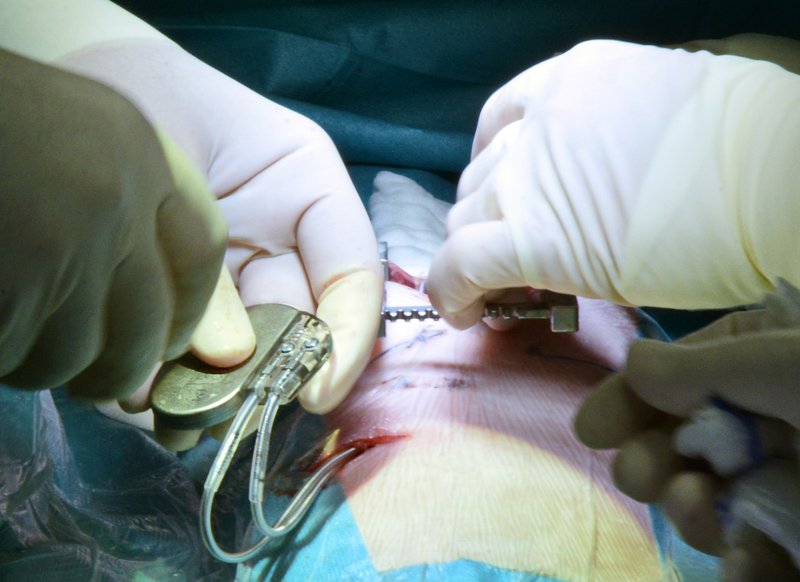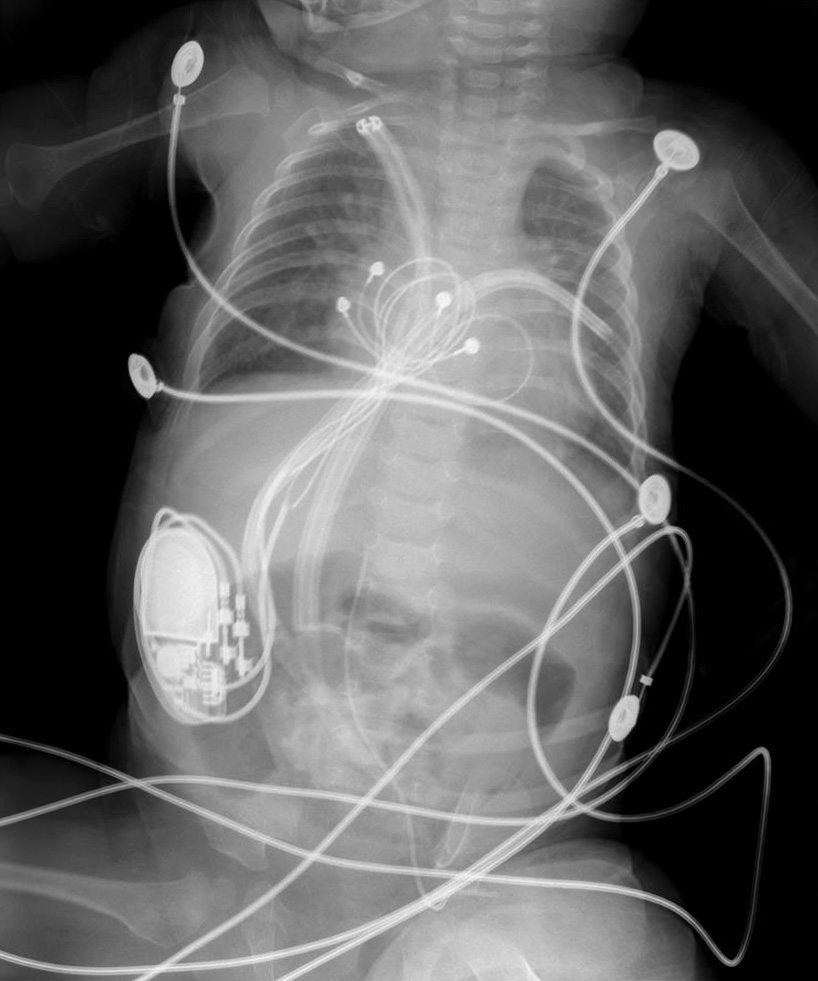A series of lectures in the field of Pediatric Cardiac Surgery took place this week at the Zan Mitrev Clinic amphitheater. The lectures were prepared and presented by doctors and middle medical staff from referent cardiac surgeries from Houston, Texas, USA. Ali Dodge Khatami M.D., a well-known cardiac surgeon, held a lecture on the operating techniques used in cyanogenic cardiopathies. In addition to him, cardiologists, anesthesiologists and pediatric intensives, as well as nurses with many years of experience in the field of neonatal and cardiac surgery, presented topics from the field of cardiac surgery.
Author: zmc_piksel_dev
Child’s play can turn into a nightmare
Child’s play often knows how to end badly, i.e., with unwanted consequences, problems and injuries. Little negligence can bring many problems that often end up in the hospital. It was just such a children’s game that caused severe injuries to a one-year-old child who came to our clinic with his parents asking for help. It may sound unrealistic, but in the case of this child, a sharp pencil was placed on his chair on which he sat down, and the pencil had broken his clothes and burst into the back of the thigh.
Parents sought help in several hospitals, but they could not solve the problem. After two months, wandering through the health system, they turned to our clinic.
The possibility of infection and the terrible pain alarmed our doctors led by Vladimir Chadikovski M.D., who immediately after the examination started to take out the foreign body.
Fortunately, without serious complications, the pencil was removed, and the wound was appropriately treated. The injuries could have been severe and with lasting consequences if the pencil damaged the child’s rectum after which the complications would have been far-reaching.
Beware, a child’s game can often end up in a hospital.
Performing Citrate dialysis at “Zan Mitrev” Clinic
Citrate dialysis represents dialysis that as a procedure hampers blood clotting or coagulation of blood within the system and during the process citrate solution is being used instead of heparin. While conducting dialysis treatment the patient’s blood exits the body and goes into the dialysis system which filters or dialysable or removes degradation products, excess water, electrolytes, or it will default to the system. This dialysis is being performed by the team of Intensive care and anesthesia in our clinic that have been specialized and trained for all types of treatment with Baxter machines – Prizmaflex by using ST 150 filters and Oxiris filters.
– While blood is in that system it can coagulate and the treatment can be unsuccessful even life threatening. For that purpose, anticoagulant agents must be used. In “common” standard dialysis we usually apply In this case we use citrate solution. Why? Heparin in many cases is contraindicated. There are patients with active bleeding, with HIT (heparin induced thrombocytopenia) patients with different types of coagulopathy, thrombocytopenia of another kind etc. In these patients the use of heparin as an anticoagulant would increase the risk of bleeding. Because of that, this type of dialysis or citrate dialysis is suitable for all categories of patients. Indications for dialysis are the same, anuria, oliguria, hyperkalemia, severe acidosis, acute renal failure, chronic renal failure, severe poisoning, sepsis …and which type of anticoagulant we are going to choose depends on the comorbidity of the patient, explains dr. Dragica Vuckova, anesthesiologist.
The advantage is that this type of dialysis is available to patients who are contraindicated or there is an increased risk of heparin dialysis, adds Dr. Vuckova.
Patients and the employees from the Zan Mitrev Clinic were running on the Skopje Marathon
Mr. Slobodan Dodevski is a patient of our clinic who after several surgeries in the past years, is with excellent fitness and as a participant in the today’s marathon (May 4th 2019), led the team of employees in this traditional race.
Forty employees from nearly all departments have manifested how the sport can send strong messages of unity, strong spirit, unity and friendship between the patients and the medical staff, a relationship that is nurtured after leaving the hospital sections.
The successfully completed race showed that we were all ready and sufficiently well concentrated, with balanced forces, to round-out, the ideas that we started, and which is actually the method of our entire work.
We remain to be “The path to hope” for all those who need us, at times when it is hardest.
Until the next marathon… stay in good health and in a good mood!
A cystic tumor, weighing 6 kilograms, was removed
– The patient came for examination with complains for pain in the abdominal area. She reported, at the doctors in Prilep, where she was given a gastric therapy, but because the symptoms did not pass, she reported to a check-up in our clinic, which she knew, because I have previously done a surgery to her brother-in-law. Immediately on the examination it was noticed that she had a massive abdominal tumor – this is how Prim. D-r Hadzi-Manchev Mane, a specialist of general surgery in Zan Mitrev Clinic, started his explanation of the case, which we had in the last week, in our Clinic.
Seemingly without any serious indications, without a specific pain, but with minor and irregular difficulties, the 49-year-old patient from Prilep, has gone through all the doctors in her town, to only tell her, that she does not suffer from anything and that she has nothing unusual happening in her body. After her husband’s insisting, she came to a check-up in our clinic, when she was stricken by the shock of what our team of doctors, headed by d-r Hadzi-Manchev, had found.
– I had no serious pains, but I occasionally had some kind of pricking in the area of my diaphragm when bending. I am a tailor, but I also work in the agriculture without any problems. I have a great appetite, I do not have any stress and I live a normal life. I received no warnings from my family doctor, that something serious is happening to me, but after insisting of my husband, I have yet, came to a check-up in the clinical hospital “Zan Mitrev”. After the doctors’ examination, the shock had followed, for me and for my family. The finding, that in my body I had a tumor of about 5 kilograms, echoed in my ears, as a strong bang that literally pushed me into bed. I could not put myself together of what I have heard, but there was no time for panicking, self-pity, nor for any thinking of what should be done. The tumor was so large that it required an emergency surgery, which the doctors here, have conducted impeccably. I am still confused of what had actually happened to me, but I express my big gratitude to the entire team of the “Zan Mitrev” clinic, for saving my life – said our patient, who is after the surgery, visibly tired, but still very calm.
D-r Hadzi-Manchev completes the explanation how the entire procedure, from diagnosing of the condition, to the surgery, has been done.
– A computer check, was immediately made to the abdomen and it was found that a large cystic tumor was in question, most probably originating from the right ovary. Because the tumor was massive, a proposal was given to the patient for an immediate operation, due to the danger of an eventual burst of the cyst. Only two days after setting of the diagnosis, she entered the surgery hall and a removal of the tumor was done, together with the right ovary. The tissue being somewhere around 5-6 kg of weight, was sent to a pathochistological procedure. The specificity of this case, is that the tumor in the abdomen although she was examined in the home town, has not been recognized as existing in the patient, at all. The quick and effective diagnosis as well as the quick treatment, was a complete heat in the middle of the target, in this human life, for which we did not know, how it would end, if she would’ve not arrived to us. The patient is well, and is already on home treatment, gradually returning to her everyday activities – says Prim. D-r Hadzi-Manchev Mane, a specialist of general surgery, in the Zan Mitrev clinic.
Best wishes, for a full recovery are extended by the Zan Mitrev Clinic team.
D-r Kenso Kase on a Kinesiotaping Seminar in Zan Mitrev Clinic
Over 50 current and future physiotherapists from our country and from the neighboring countries, have attended the Kinesio – Seminar and the workshop, that took place on April 21st 2019, at the Zan Mitrev Clinic. The event was organized by the Macedonian Physiotherapeutic Association, in cooperation with the company FILA – PHARM, which was also supported by our clinic. The participants of the seminar had the honor to upgrade their knowledge and their skills, by learning directly from D-r Kenzo Kase, the innovator of the kinesiotaping technique and the tapes under the brand “Kinesio”, which may be purchased at our Fila pharmacy or Fila Pharm.
What is kinesio taping?
It is a technique for sticking “Kinesio Tex” tapes, which have a function to accelerate the natural healing process of the organism, providing a support and stability of the muscles and joints, without their limitation. The “Kinesio Tex Tape” is an elastic adhesive tape, developed by the Japanese chiropractitioner D-r Kenzo Kase. It is a hypoallergenic, waterproof strip, made of cotton fibers with acrylic glue that may be used for several days and is safe to be used on the wide population, from athletes to pediatric patients.
Kinesio Taping is commonly used:
– as a support of the muscles (improves contractions of the weak muscles, reduces the muscle fatigue and the cramps and allows for a greater volume of movement reducing the pain)
– in order to decrease the edema and hematomas (improves the blood and the lymph circulation, to reduce the temperature and increase the elimination of toxins in the muscle tissue and thus reduces inflammation and pain in the skin and muscles)
– to activate the internal analgesic systems (to activate the spinal and the efferent inhibitory system)
– upon a correction of the joint problems (improves the ratio of the joint surfaces that is provoked by spasm or shortening of the muscles, normalizes the muscle tonus and the disorders in the particular fascia, increases the movement volume and reduces the pain)
D-r Kase says that this method is suitable for both children and pregnant women without any side effects, obtaining many possible benefits.
– The Kinesiotaping has four functions: to relieve the pain, to correct the joint dysfunction, to inhibit or to help the muscle function and to help with inflammation and impaired circulation problems. The patch creates micro spaces between the various tissues, to allow a free flow and purification of the fluids in the body. This is called Hydrokinetic, where the liquid (Hydro) can move (kinetics) – says D-r Kase.
He underlines that this method gives excellent results in post-operative Kinesiotaping and in the EDF concept which is very promising in treating neurological conditions and body aches.
D-r Kase adds, that sometimes, the place where you experience the greatest pain, is not the right place where the Kinesio is needed. After the received advice, many people can learn from the therapist how to put the stickers on themselves, at home.
The Macedonian Physiotherapist Association continues its cooperation with the Kinesio University of America in organization of the courses that are already scheduled and the registration is underway.
CT1 / 2 will take place on June 1st and 2nd of the year 2019, and the CT 3 on November 1st and 2nd in 2019, at the Zen Mitrev Clinic.
The registration takes place at the next email address president@mfz.mk or by telephone +38970/772122.
The attendees are also informed that Macedonia already has a distributor of Kinesio products and that is the FILA – PHARM, a one of the Macedonian Physiotherapeutic Association’s partners. The Fila Pharm is a pharmaceutical company that fulfills the requirements of the Macedonian physiotherapists, in order to make the original kinesio tapes, available to them.
A pacemaker inserted in a 5-month-old baby weighing 4.5 kg
For the first time, a pacemaker was inserted in a 5-month-old baby within the Children’s Cardiac Surgery of the Zan Mitrev Clinic. The baby weighing 4, 5 kg with Down’s syndrome, is successfully recovering after the surgery of the atrioventricular septal defect and is expected to be discharged on home treatment soon.
The first ever pacemaker inserted in such a young child was inserted due to a heart rhythm disorder. The inserted pacemaker is double-ventricular epicardial permanent pacemaker.
The team from the Zan Mitrev Clinic, guided by Vladimir Cadikovski M.D. and Zan Mitrev M.D., in cooperation with Prof. Nikola Gjorgov, inserted the pacemaker in the young patient.
Frozen shoulder syndrome
Frozen shoulder is a clinical syndrome with vague etiology (no known cause). It is characterised by pain and limited movement in the shoulder area. In most cases, patients complain of severe pain especially during the night, and sometimes need to use analgesics so they can fall asleep.
The articular cartilage is thickened with fibrous changes. The x-ray shows increased bone density due to inactivity. Changes that occur in the shoulder joint are reversible and most cases result in full recovery.
This condition usually occurs after the fifth or sixth decade of life, but the onset may occur at any age. There is a primary and secondary frozen shoulder syndrome. The primary one occurs without a known cause and can not be associated with any other known disease, whilst the secondary is often accompanied by other diseases: diabetes, stroke with limb seizures, physical trauma, neck spondylosis, and similar.
The condition itself presents itself through three phases:
– Freezing phase (0 – 8 weeks)
– Frozen phase (8 – 16 weeks)
– Defrosting phase (over 4 months)
PHYSIOTHERAPY is the basic therapy for restoring shoulder functions in this condition, it aims to reduce pain and increase movement capacity. The use of medication therapy is only a remedy in the recovery process.
In the first phase of the frozen shoulder condition, exercises with moderate pace with stretching to the pain limit are used to preserve the movement capability, cryotherapy is additionally applied (ice therapy) before and after the exercises. Treatment can be combined with electrotherapy – ultrasound, TENS – transcutaneous electro-stimulation, kinesiotherapy and laser therapy to reduce pain, as well as swelling.
In the second phase of the frozen shoulder an emphasis is placed on exercises and stretching the shoulder area where the movements are less occurring. At this stage, emphasis is placed on retaining strength and restoring mobility in the shoulder as much as possible. At this stage it is recommended to apply kinesiotherapy tapes. The therapist is actively involved during this stage – assisting with exercises with movements that are most difficult for the patient.
The third phase is the stage where the movements in the shoulder have already started to return.
At this stage, “more aggressive” exercises are carried out however, only to the pain threshold, in order to reach full movement range.
Exercises for muscle strengthening on the shoulder belt that has weakened due to insufficient movement activity.
It is recommended at this stage to perform exercises with both hands in order to keep equal balance in both hands.
It is very important that the treatment be carried out by a qualified physiotherapist, so that the patient can receive appropriate therapy.
The Macedonian Physiotherapeutic Association, in cooperation with the FILA-FARM company, from Skopje, organises a Kinesiological Seminar and Workshop on 21 April 2019 at 10 am at the Zan Mitrev Clinic Skopje. Dr. Kenzo Kase – the innovator of kinesiotherapy techniques, will be a guest at this Seminar.
You can register your presence at the following email address: president@mfz.mk or dialling this phone number: 070772122.
Registration fee for members of the MFA is 1000 denars and for all the other is 1200 denars.
The registration fee should be paid at the this bank account 210072165990137 in NLB TUTUNSKA BANKA AD SKOPJE with the following payment description: kinesiotherapy seminar, no later than 15 April 2019.
The number of participants is limited.



